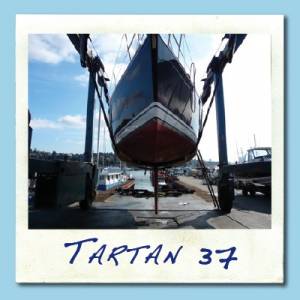
Common Sense Boat Buying
Buying a yacht is generally a big financial commitment for most people. Ensuring that you buy successfully requires some effort and personal involvement.
Let’s start with the physical yacht itself. There are three really important things that you need to ensure as part of a purchase or sale:
1) Integrity of the hull and deck.
2) The condition of the engine(s).
3) The condition of the rigging and sails.
Many buyers abdicate responsibility for these three key points and engage a surveyor to give them a condition report based on his own priorities. If you really want to extract value from a survey then the surveyor needs to be directed and that means doing a thorough initial inspection yourself before asking the surveyor to use his professional expertise to see things that you may not.
The hull is what keeps the boat afloat! Many buyers have an almost obsessive concern about osmosis or blisters when a much more likely cause of sinking is inadequately maintained sea cocks. How many buyers lift up the cabin sole and check that all the sea cocks operate correctly and that the hoses are not deteriorated? Too few! Ask the seller to tell you when was the last time the boat was out of the water, what hull maintenance was carried out in the last two years, and why? Ask the seller to tell you if the yacht has ever been grounded or involved in an accident.
You do not need to go out on a sea trial to know that an engine is sound. Run it, look at it, listen to it, look at the exhaust fumes, put it into gear against secure mooring lines and let it run up to operating temperature. Ask impertinent questions about the maintenance program.
Look at the rigging. Are there any signs of corrosion or cracking? Are the chain plates securely anchored? When was the standing rigging last renewed? In the case of the sails make sure you know what’s in the sail inventory. Examine the fabric. Is the stitching sound? UV radiation damages sail fabric, especially the stitching. Use your own eyes.
People often perceive marine electronics to be an important factor in a boat’s value. This is often a mistake however because the electronics can be changed relatively easily. The inexorable price/performance improvement of marine electronics in recent years and the ability of yachtsmen to buy their equipment at discount prices should lower its importance in any buying decision.
Finally examine the safety gear and make a list of what is current and what needs to be replaced.
Do all of this BEFORE making an offer and before you engage in a costly survey.
So what do you need a surveyor for? A surveyor needs to be directed to find genuine “material defects”. A surveyor’s report loaded with photographs, telling you what model winches are installed or stating the obvious and copied from the broker’s listing is a waste of time and money. If you’ve inspected the boat yourself you’ll know all about the safety equipment and all the other equipment installed on the vessel. You don’t need a surveyor to tell you that the flares are out-of-date on the boat! A good surveyor will be pleased to receive guidance to delve more deeply into those areas where your own inspection raised concerns. This makes his life more interesting and gets you immersed in what will soon become your own boat. If your chosen surveyor insists on doing things that would not add further insight beyond what your own inspection has revealed say so and if he insists remember you are the customer and you have choices.
If you find this daunting you should not — it’s all common sense. Boatshed Seattle is here to help guide you through the whole transaction and beyond, making sure that you acquire a sound yacht and assisting you in the launch of your new, enjoyable boating experience.
Thanks to Boatshed Gibraltar for this article.

